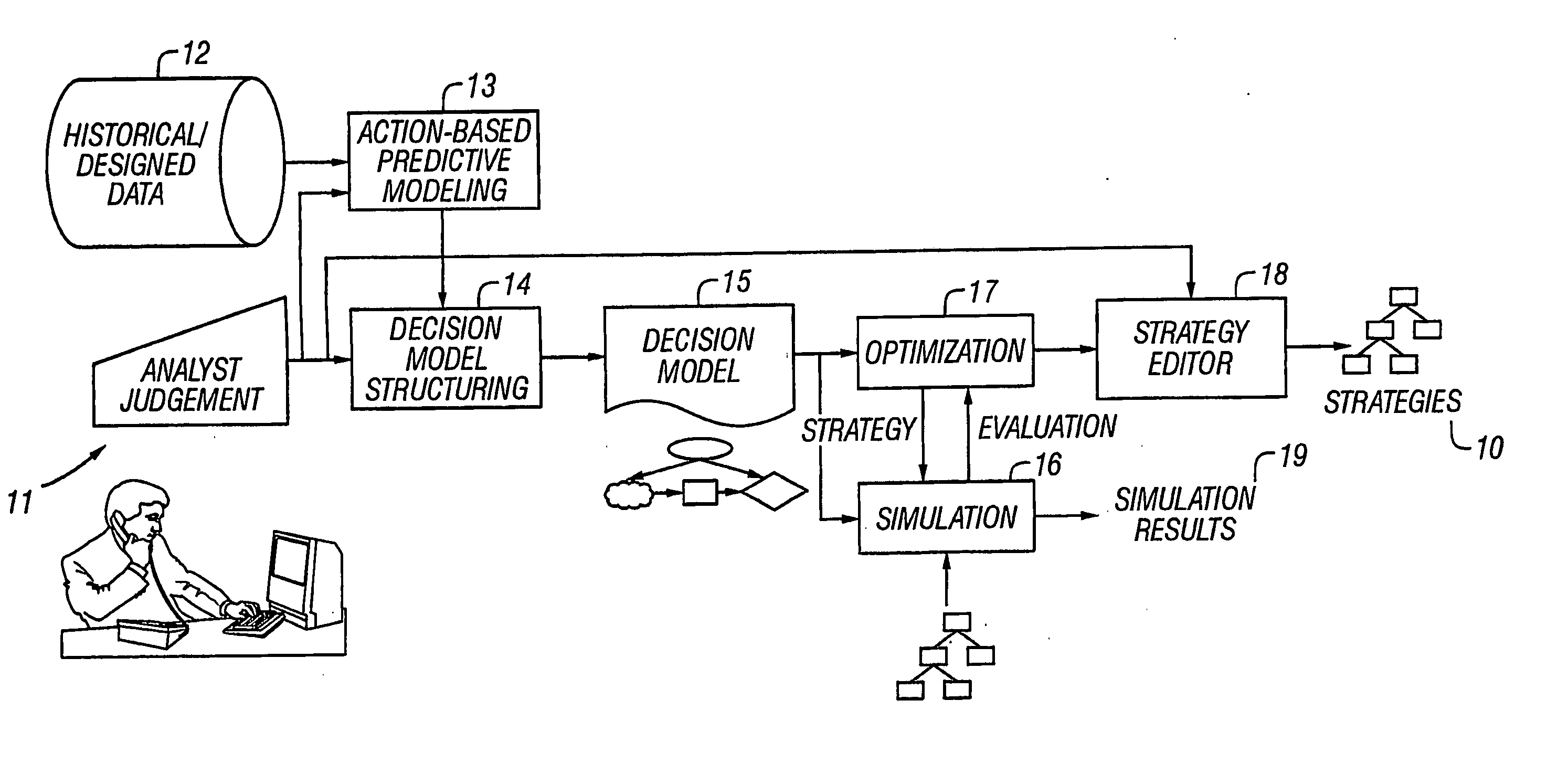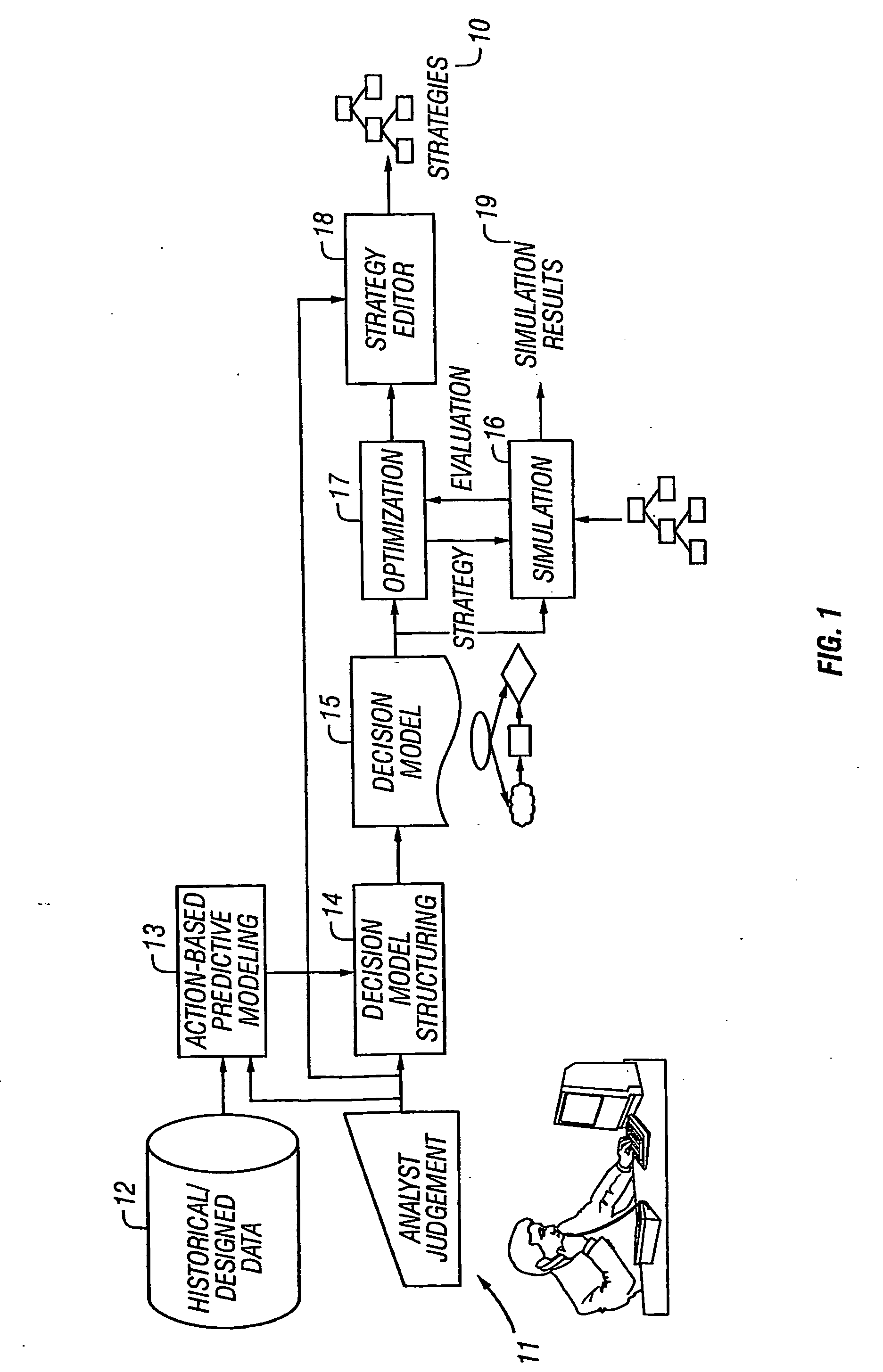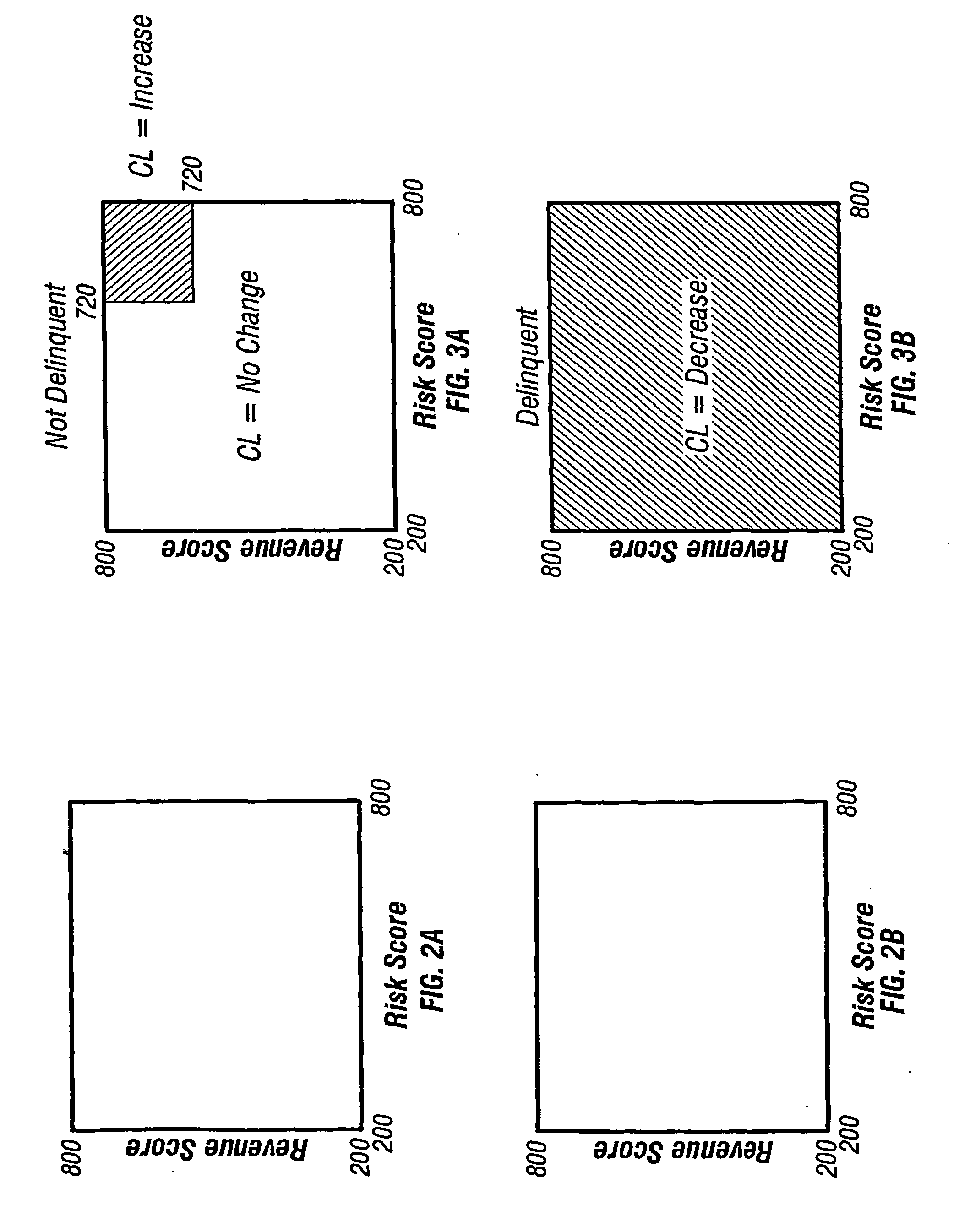Model-based and data-driven analytic support for strategy development
a strategy development and model-based technology, applied in the field of decision analysis, can solve problems such as inability to create a representative population that includes all possible cases, and inability to work well on other similar populations
- Summary
- Abstract
- Description
- Claims
- Application Information
AI Technical Summary
Benefits of technology
Problems solved by technology
Method used
Image
Examples
Embodiment Construction
[0180] The following is a simple example to illustrate the concepts presented above. Assume a typical decision situation. Assume a decision situation having many repetitive decisions with relatively little at stake in each decision. There is a significant amount of uncertainty in the decision situation, e.g. good / bad, revenue.
[0181] Assume that the decision key space is made up of three dimensions: a risk score, a revenue score, and delinquency, e.g. 0, 1+cycles. Assume that the scores are continuous-valued between 200 and 800. The decision key space can be pictured as shown in FIG. 2.
[0182] Assume that the action space is a single dimension that is a credit line adjustment decision. Assume that there are three alternatives to credit line adjustment are: decrease to current balance+10%, no change and increase credit line by 10%.
[0183] In this context, a strategy is any function that maps a particular set of values of risk score, revenue score, and delinquency, i.e. a point in this d...
PUM
 Login to View More
Login to View More Abstract
Description
Claims
Application Information
 Login to View More
Login to View More - R&D
- Intellectual Property
- Life Sciences
- Materials
- Tech Scout
- Unparalleled Data Quality
- Higher Quality Content
- 60% Fewer Hallucinations
Browse by: Latest US Patents, China's latest patents, Technical Efficacy Thesaurus, Application Domain, Technology Topic, Popular Technical Reports.
© 2025 PatSnap. All rights reserved.Legal|Privacy policy|Modern Slavery Act Transparency Statement|Sitemap|About US| Contact US: help@patsnap.com



